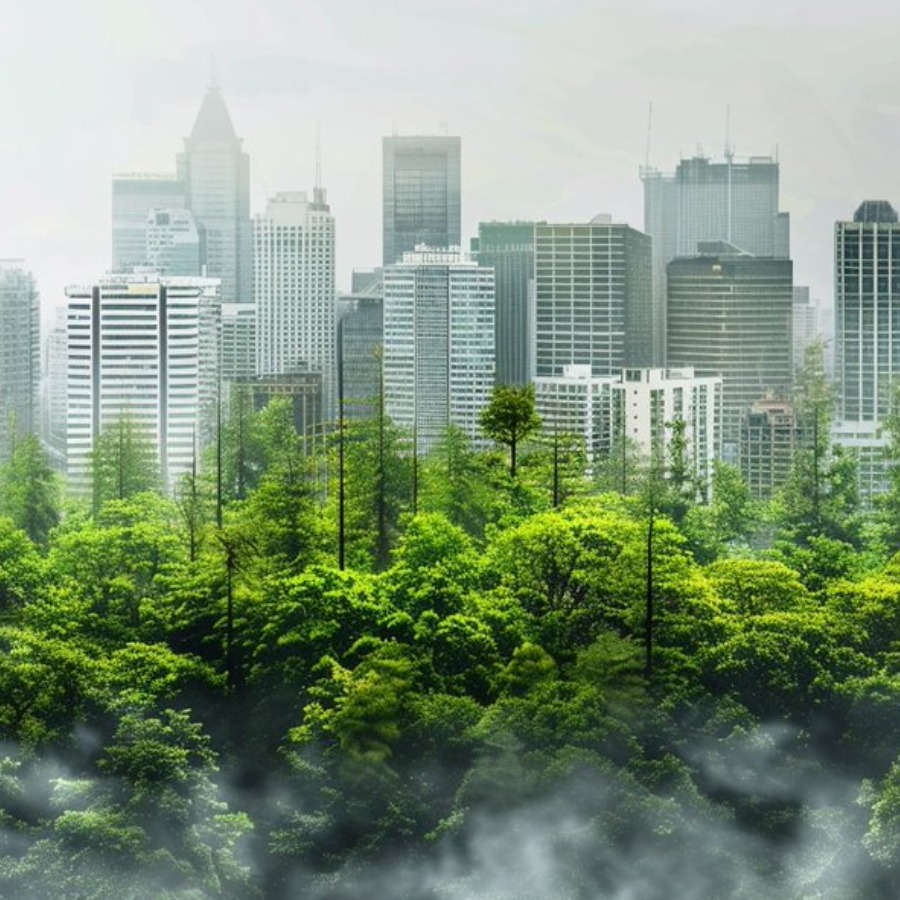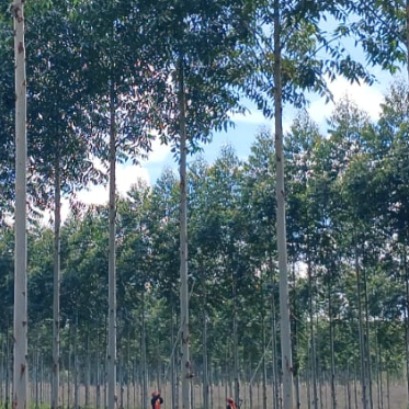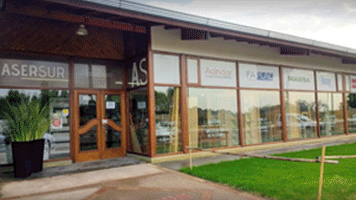
How many trees are needed to cool a city? They develop a model to define arboreal coverage objectives
A study suggests that planting trees does not reduce temperature in a direct or linear proportion: when applied to larger areas, the refreshing effect grows, but does so at an increasingly lower pace. It is known about the crucial role that trees have to combat heat, especially in urban areas. But, if you want to lower the temperature in a city in 1, 2 or 3 ° C, how many trees do you have to plant?
A research group from the Chinese Academy of Sciences developed a model to estimate the impact of trees on temperature reduction in urban areas. It is a scientific tool to help urban planners to define concrete afforestation goals. Arboreal coverage status and temperatures in four scientific cities were proposed to analyze how much temperatures lower as trees are added in urban areas of different sizes, from Apples and neighborhoods, even whole cities. That is, how the cooling efficiency depends on the covered area. in pixels equivalent to an apple, and calculated the temperature and the percentage of tree coverage of each section. Then, they grouped these areas in larger sectors, such as neighborhoods and districts, and analyzed the relationship between the increase in vegetation coverage and the reduction of temperature on each scale. Valuable quality for urban planning compared to climate change The convex power law follows: the thermal benefit of adding trees is higher on a small scale and decreases in a gradual rhythm as the area is extended. In other words, a 1 % increase in the tree coverage generates an effect of greater cooling in small areas, and the effect is stabilized when the tree coverage extends to large areas. This implies that, although each additional tree continues to contribute to urban refrigeration, the incremental impact decreases on a larger scale. For example, in cities like Beijing, a 1 % increase in the vegetable cover reduces the temperature of an apple by approximately 0 , 06 ° C. However, at the scale of the entire city, the same increase in the tree cover reduces the temperature by about 0.18 ° C. So, at the scale of an apple, add trees has a direct and useful cooling effect. But when this strategy extends to the entire city, the cooling becomes more efficient in general terms, but does not increase in a linear way. Covering the entire city, the temperature continues to fall, but each new tree does not cool as much as the first .Este hallazgo fue consistente en las cuatro ciudades que analizaron, lo que sugiere que el patrón podría aplicarse a diferentes tipos de clima y áreas urbanas. It is an indication that the relationship between the size of the area and the efficiency of trees could be generalizable and useful to plan the planting of trees in diverse regions. Knowledge about the power law in the efficiency of trees cooling It is useful for urban planners, responsible for environmental policies and municipal authorities, which could with more precision how much vegetation is necessary to achieve specific thermal reduction objectives. For example, in Baltimore, increasing forest cover by 6.39% could reduce Urban temperatures in up to 1.5 ° C, which could significantly help to counteract the island of Calimitations of the study and next steps The study was led by researchers from the Chinese Academy of Sciences, in collaboration with Steward Pickett, ecologist at the Cary Institute of Ecosystems studies, and was published in Proceedings of the National Academy of Sciences The authors recognize certain limitations. For example, that the model cannot indicate where trees should be planted, since that requires to consider social factors and equitable distribution. Cooling effects could vary with climate change, which threatens to make some warmer and dry regions in the future.
IT MAY INTEREST YOU
 Paraguay | The plantations became instruments of territorial development and the generation of decent employment, INFONA highlights.
Paraguay | The plantations became instruments of territorial development and the generation of decent employment, INFONA highlights.
Plantings in different phases, control of ants and weeds, pruning and thinning, mechanized harvest, technology applied to the field and complete integration of the production cycle were part of the CREA Forestal proposal in its Technical Update Conference – JAT Forestal 2025. The event took place on Friday, November 14, at Estancia Ñemity, located in San Juan Nepomuceno, Caazapá, where agricultural producers, technicians, contractors, students and companies in the sector met to observe the forestry business of the future in action.
 Combilift Unveils the 2025 Christmas video “Twelve Days of Christmas” – with a Twist!
Combilift Unveils the 2025 Christmas video “Twelve Days of Christmas” – with a Twist!
Monaghan, Ireland – November 2025
 Experts cant believe it, but this tree is the oldest in the world and continues to bear fruit: it is 4,000 years old.
Experts cant believe it, but this tree is the oldest in the world and continues to bear fruit: it is 4,000 years old.
Nature keeps secrets that defy the passage of time, and one of the most surprising examples is a tree that, approximately 4,000 years old, continues to bear fruit today. This specimen has become a symbol of resistance and longevity, capable of surviving climate changes, landscape transformations and human activity itself.





















